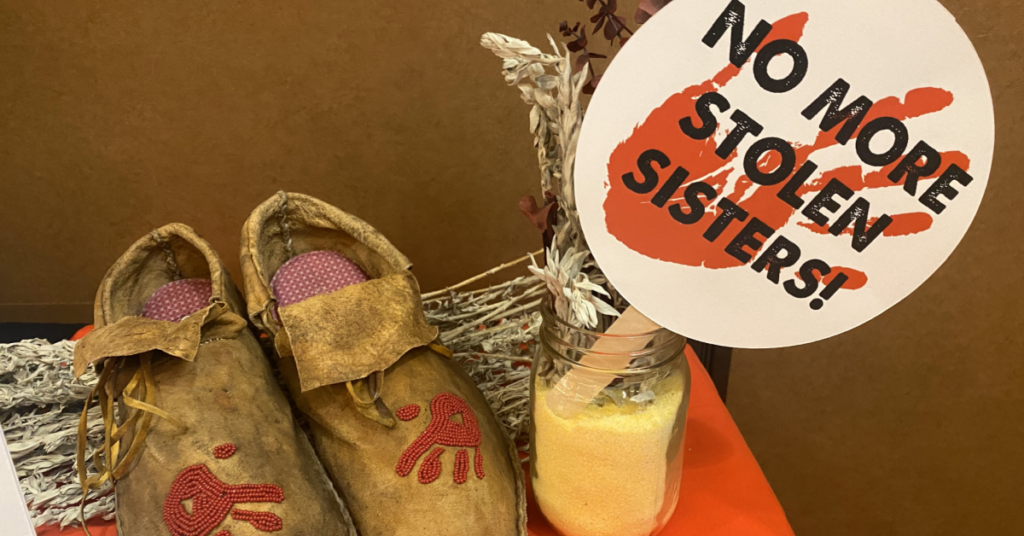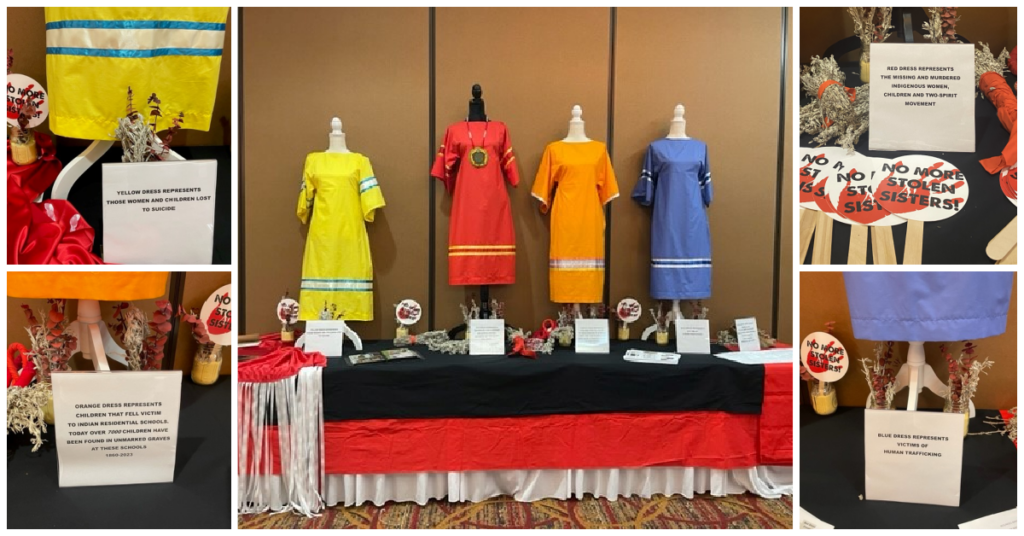SDHC Explores MMIP Issues through United We Stand Initiative
Lily Mendoza, Red Ribbon Skirt Society: “We need to have the conversation.”
November 25, 2023

November 17 is a notable day in South Dakota history – or at least it should be. On that date in 1976, Donna Larrabee disappeared.
A Rapid City resident and member of the Cheyenne River Sioux Tribe, 16-year-old Larrabee traveled to California that fall to see her father. After the visit, she boarded a bus to return home but never arrived, and her family never heard from her again.
Larrabee’s is the oldest missing persons case on record in South Dakota, but it is by no means the only one. Indigenous people continue to go missing at astounding rates across the state, the nation, and the continent.
With support from the United We Stand initiative of the National Endowment for the Humanities, SDHC is exploring the topic of Missing and Murdered Indigenous Persons (MMIP), sometimes referred to as Missing and Murdered Indigenous Women, Children, and Two-Spirits (MMIWC2S). Several presenters at the South Dakota Festival of Books in September addressed the issue, including Lily Mendoza (Cheyenne River Sioux), founder of the Red Ribbon Skirt Society of the Black Hills. Mendoza also created a display in Exhibitors’ Hall to honor victims.

Led by Indigenous women like Mendoza, the Red Ribbon Skirt Society not only promotes awareness and education about the MMIP epidemic, but also advocates for, supports, gives voice to, and stands with the families whose lives have been affected by the absence or death of relatives.
The Red Dress movement began in Canada and spread rapidly, with the color chosen deliberately for its symbolism. “Red is the color that spirits can see from the other side,” said Mendoza.
Red is also used in the image of a hand, often painted across the mouth, to share the sentiment, “We will not be silenced.”
The statistics are staggering. According to the Centers for Disease Control and Prevention, 5,203 Indigenous women and girls went missing or were murdered in the United States and Canada in 2021, the latest year for which official National Crime Information Center statistics are available. The FBI calculates the rate of disappearance for Indigenous women and girls as more than two and a half times their estimated share of the U.S. population, and that does not include men, children, or Two-Spirit persons.
Of primary importance to advocates like Mendoza is raising awareness of MMIP. With the Not Invisible Act of 2019, the U.S. Congress created a plan – not yet fully implemented – to formally address the issue. On November 1, the Not Invisible Act Commission released its findings and recommendations for ending the MMIP epidemic. They began by acknowledging that the issue is real and important.
While this first step is small, said Mendoza, it is crucial. “The importance of being present – of bringing authenticity to the issue – is vital,” she said. “We need to have the conversation.”
A big part of that conversation is bringing attention to the humanity of the victims. The statistics can be imprecise and overwhelming, but behind each number is an individual and a grieving family. For Mendoza, the process of healing begins with “saying their names” – remembering and honoring those who have been lost, like Donna Larrabee.
Throughout 2024, SDHC grant funding through United We Stand will support libraries across the state in producing local programming related to MMIP issues. Information will be shared on the SDHC website as it becomes available.
To view the “Writing About Missing and Murdered Indigenous Persons” panel from the 2023 South Dakota Festival of Books, moderated by NEH Chair Shelly C. Lowe (Navajo) and featuring Mendoza and five authors working in a variety of genres, click the link below.
Learn more about humanities programming in South Dakota by signing up for SDHC e-Updates!